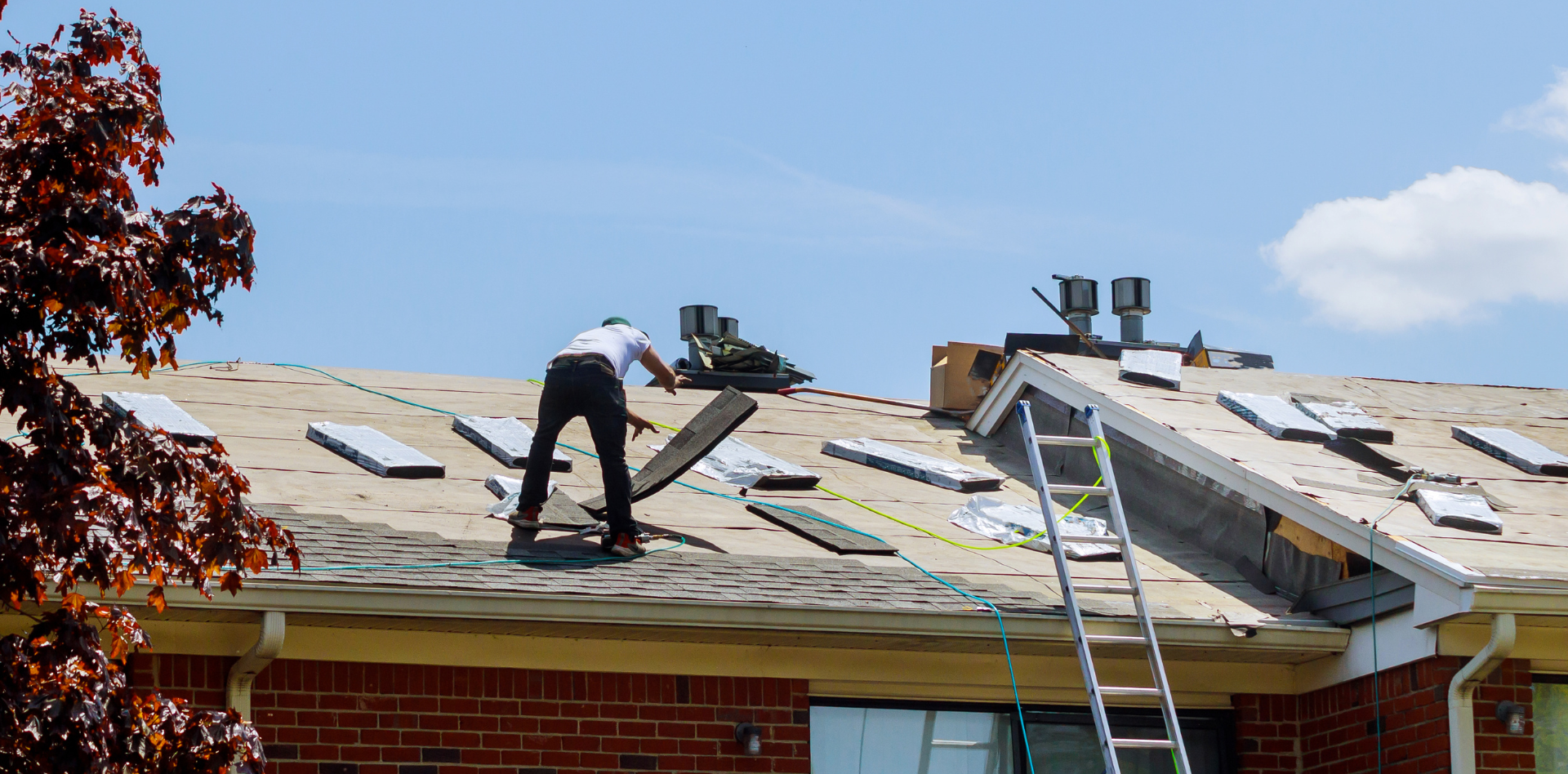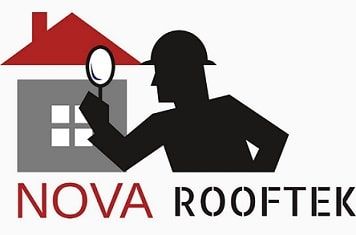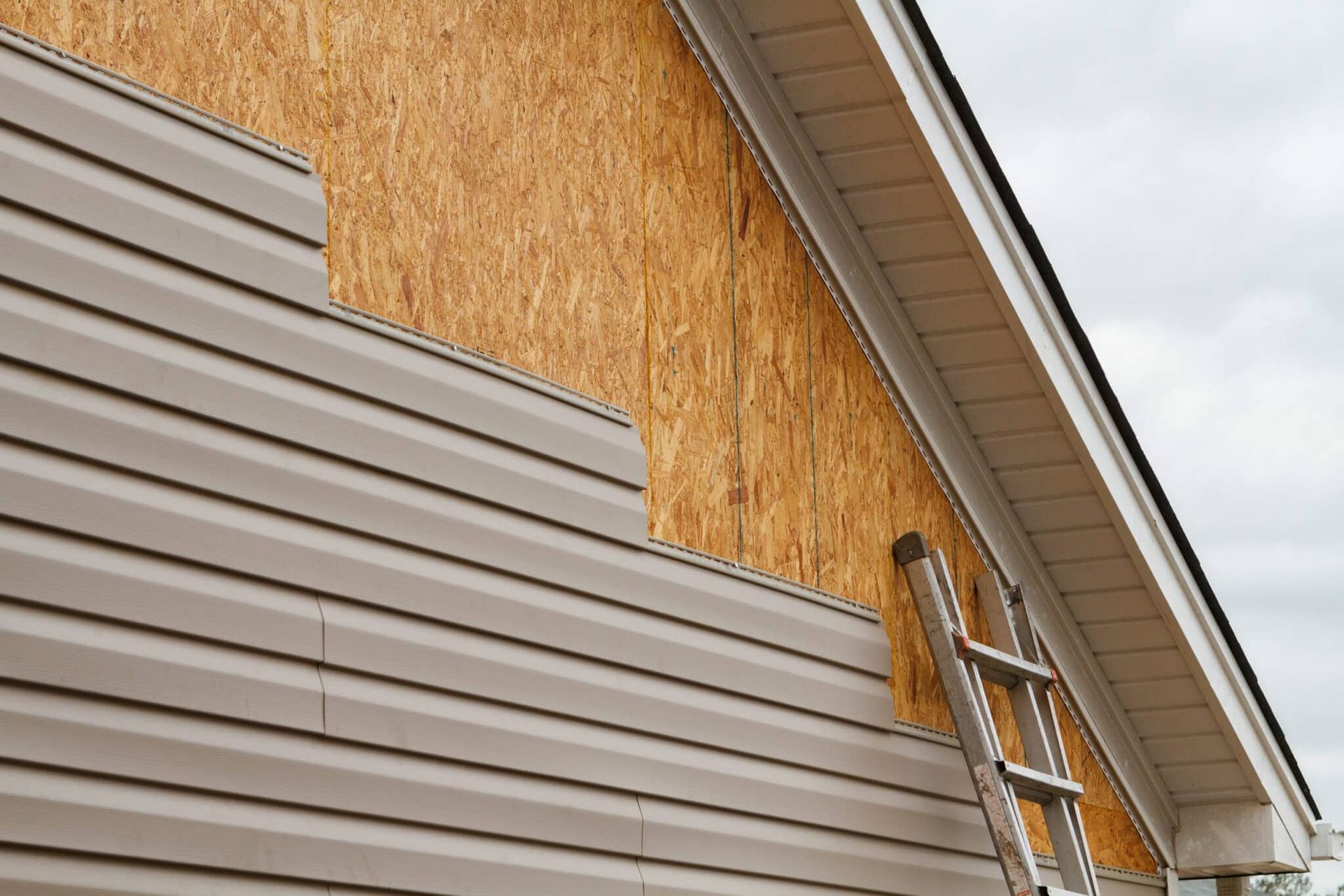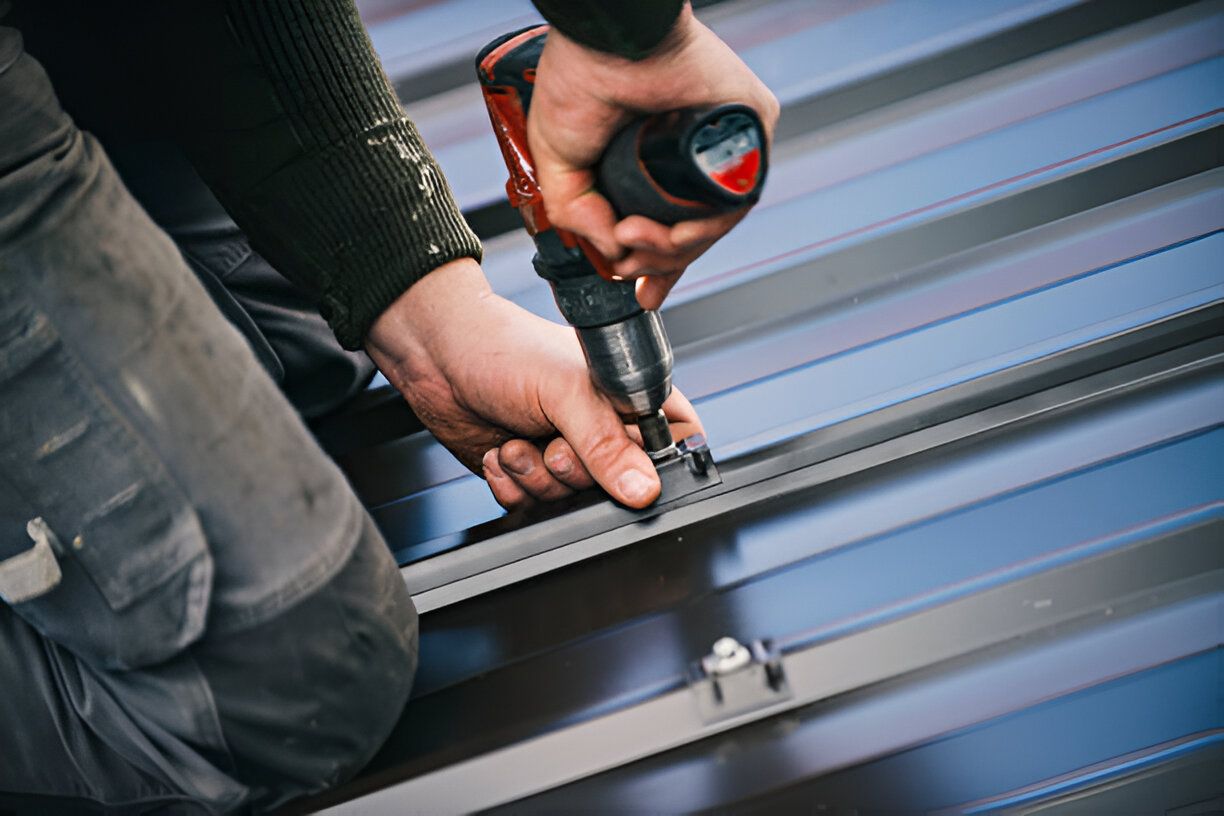How Do You Repair a Roof Without Replacing It?

Thomas Valera // Owner of NOVA ROOFTEK

Top Methods: How Do You Repair A Roof Without Replacing It?
A leaking roof can be repaired without replacing it by spotting damage early, fixing small issues promptly, and knowing when to seek professional help. This guide covers practical steps to keep your roof in good shape and avoid costly replacements.
Key Takeaways
- Early detection of roof damage is crucial to prevent costly repairs; keep an eye out for water spots, damaged shingles, and rusted flashing.
- Temporary fixes like roofing cement and tarps can buy you time during a leak, but address the root cause promptly to avoid further damage.
- Regular roof maintenance and inspections extend the lifespan of your roof, catching potential issues before they escalate into major problems.
Understanding Roof Repair vs Replacement
When it comes to addressing issues with your roof, it’s essential to understand the difference between roof repair and replacement. Roof repair involves fixing specific problems or damaged areas, while replacement entails removing the entire existing roof and installing a new one. Knowing which option is best for your situation can save you time, money, and stress.
Factors to Consider:
- Age and Condition of the Roof: Older roofs or those in poor condition may benefit more from a full roof replacement.
- Extent of Damage: Minor issues like a few damaged shingles can be repaired, but extensive damage might necessitate a new roof.
- Cost of Repairs vs. Replacement: Sometimes, frequent repairs can add up to the cost of a new roof, making replacement a more economical choice in the long run.
- Potential for Future Damage: If your roof is prone to recurring issues, a replacement might offer a more permanent solution.
Roof Repair:
- Cost-effective: Repairs are generally less expensive than a full roof replacement.
- Time-efficient: Repairs can often be completed quickly, minimizing disruption.
- Temporary Solution: Repairs can extend the roof’s lifespan, buying you time before a full replacement is needed.
- Localized Fixes: Repairs address specific issues without the need to replace the entire roof.
Roof Replacement:
- Best Protection: A new roof offers the highest level of protection for your home.
- Increases Home Value: A new roof can enhance your property’s market value.
- Addresses Underlying Problems: Replacement can resolve issues that repairs might not fully address.
- Extended Lifespan: A new roof can last for decades, providing long-term peace of mind.
Identifying Roof Damage Early
A proactive approach to identifying roof damage early on can thwart more severe complications down the line. Water spots present on your ceiling or within the attic are often harbingers of underlying issues, such as damaged shingles, compromised flashing, or felt paper beneath the shingles that shows discoloration. Identifying a leaky roof early is crucial to prevent more significant problems and associated costs. Committing to routine inspections of your roof is a strategic move to avoid costly repair jobs.
Stay alert for additional warning signs like:
- Spots where water has accumulated on your ceilings
- Shingles that are either missing or impaired
- Flashing exhibiting rust
- Felt paper under shingle layers with discolored patches
Regular scrutiny of these elements can be instrumental in circumventing exorbitant expenses related to fixing your roof.
When you notice bubbling across the surface area of your rooftop, it’s often indicative of moisture being trapped. This should serve as a prompt indicator necessitating immediate action if you want to prevent widespread destruction. Telltale indications suggestive of a leaky rooftop tend not just to appear externally, but internally too. Stains and watermarks marring walls and ceilings signal that dampness is breaching through from above. Adopting consistent maintenance practices along with comprehensive checks can uncover developing concerns soon enough so consequential harm might be avoided.
Inspect areas surrounding windowsills, corner trims, and siding panels diligently for any discernible fissures or openings—moisture infiltrating via these junctures could also suggest impending troubles linked back up top. Roofs advancing in years may exhibit amplified vulnerability against persistent degradation over time, which raises chances for an occurrence involving leakage substantially higher than normal. It’s wise to maintain periodic surveillance aimed at detecting even small leaks before they escalate into significant predicaments.
Preparation and Safety
Before starting any roof repair or replacement project, it’s crucial to prepare and ensure safety. Proper preparation not only makes the job easier but also significantly reduces the risk of accidents.
Safety Gear:
- Protective Clothing: Wear long sleeves and pants to protect your skin from sharp objects and harsh weather.
- Non-slip Rubber-sole Shoes: These provide better grip and reduce the risk of slipping.
- Safety Goggles: Protect your eyes from debris and dust.
- Thick Work Gloves: These protect your hands from cuts and abrasions.
Proper Equipment:
- Ladders and Scaffolding: Ensure they are stable and secure before climbing.
- Harnesses: Use safety harnesses to prevent falls, especially on steep roofs.
- Roofing Tools: Have all necessary tools, such as hammers, roofing nails, and roofing cement, within reach.
Stable Working Surface:
- Secure Ladder: Make sure your ladder is on a flat, stable surface and is properly anchored.
- Scaffolding: If using scaffolding, ensure it is set up correctly and securely.
Spotter or Assistant:
- Extra Hands: Having someone to assist can make the job safer and more efficient.
- Emergency Help: An assistant can provide immediate help in case of an accident.
Temporary Fixes for Immediate Leaks
Upon detecting a roof leak, prompt intervention is crucial to avoid additional damage. Until such time as you can arrange for permanent repairs, certain quick-fix methods can be employed. For these stopgap solutions, typically used materials include roofing cement and tar paper. Also available are waterproof tarps. Roofing tape might also serve well in sealing smaller leaks if at hand.
In situations where the leak has been located, covering the affected zone with a tarp can act as an interim remedy. Secure this tarp using substantial weights like rocks or bricks to ensure it extends over the full area of leakage. This approach provides relief, especially when poor weather conditions make lasting repair work unfeasible. To guarantee a watertight bond around its perimeter edges, apply roofing cement utilizing a caulk gun.
Although merely provisional measures, these methods effectively safeguard against water infiltrating into your home or causing increased harm to your roof’s structure. It remains critical that one addresses the primary source of any leak expediently, failure to do so could necessitate regular maintenance and potentially lead to more serious issues.
Repairing Small Holes and Cracks
Neglecting minor perforations and fissures in your roof may seem trivial, but over time they can escalate into more severe complications. Addressing a minor roof leak promptly with roofing adhesive and caulk can prevent more significant issues. It’s vital to have roofing adhesive and caulk on hand to address these small imperfections swiftly. By taking prompt action against tiny holes, you can avoid damage that could prove expensive.
For the smallest of breaches, liquid flashing outperforms conventional caulk by offering superior sealing capabilities for minuscule gaps to maintain a water-resistant barrier atop your home. Frequent culprits of such diminutive openings are dislodged roofing nails or fixtures like antenna mounts – both manageable with some do-it-yourself diligence. When conducting repairs, it’s imperative to conceal exposed nail heads as this aids in thwarting moisture entry. Integrating roof sealant serves as an additional layer of defense for your rooftop.
Confronted with somewhat larger apertures? Implementing metal flashing beneath compromised shingles emerges as a viable fix strategy—enlist the use of a putty knife alongside a caulk gun for dispensing repair substances accurately. Meticulous patch-up work is paramount in order to inhibit mold proliferation and prevent issues tied to dampness penetration.
Replacing Damaged Shingles
To prolong the lifespan of your roof, it’s crucial to replace damaged shingles. Commence by lifting the impaired shingle with a flat pry bar, opting to perform this task when the weather is cooler for better separation ease. Use the pry bar to break apart any seals and extricate nails from not only the affected shingle but also those on adjacent roof shingles.
Upon preparing space for a new tile, apply roofing sealant beneath it and press down securely. Doing so guarantees that your replacement adheres well, creating a strong barrier against environmental conditions. For improved stability in windy situations, place asphalt roof cement under each tab of the new tile—this step fortifies its resistance to gusts.
Make sure you align fresh tiles accurately with existing ones using chalk lines—a measure that should be taken swiftly if missing shingles are noticed—to shield underlying layers from damage and bypass more complex repairs carried out by professionals. Adhering strictly to these instructions will enable you to effectively repair damages on your roof without succumbing to extensive harm.
Fixing Flashing Issues
Flashing serves as a crucial waterproof barrier at the junctures of roofing materials, thwarting water intrusion in areas prone to leaks. When flashing is visibly rusted or becomes loose, it’s a sign that immediate action is necessary to stave off leakages. Ignoring damaged or absent flashing can result in substantial water entry into the structure, thus urgent remediation or replacement is required.
There are various types of flashing tailored for different protective functions on a roof. These include step flashing, continuous (apron) flashing, vent pipe boots, and valley flashing which all help maintain watertight seals. For instances where chimney flashings have become rusted over time—sliding new pieces underneath may suffice—but more extensive deterioration could call for complete removal and installation of fresh material.
For reattaching replacement flashings securely during repairs, use specifically designed roofing nails. To augment their resistance against moisture infiltration, apply an ample amount of roofing cement along the edges where they meet other surfaces. Ensure that any failing caulk around these joints gets replaced with durable high-quality sealing compounds so your roof remains impermeable to water ingress.
Addressing Vent Boot Problems
Inspecting vent boots for deterioration, such as cracks in the rubber boot or sealant, is crucial in preventing roof leaks. Keep an eye out for damaged housings, separated seams, and absence of nails when repairing vent issues on the roof.
When water penetrates your home due to a compromised rubber boot around the pipe, it can cause serious damage. In these instances, it’s advisable to install new vent boots. To ensure a tight seal with the caulk below, firmly press down on the newly fitted rubber boot. For reinforced safeguarding against moisture entry into your dwelling place under both sides of shingles, additional caulking may be applied.
For secure attachment replace any nails that have gone missing from vent boots with screws which have been outfitted with rubber washers. This will guarantee their stability. Adhesive roofing tape backed by adhesive provides a remedy for small leaks within attic spaces during dry weather conditions as rain would render this solution ineffective—this serves as temporary fix until more permanent repairs are executed.
Cleaning Gutters to Prevent Ice Dams
Maintaining clean gutters is essential for reducing the possibility of ice dam formation on your roof. When gutters are blocked with debris such as leaves, it can increase the chances of an ice dam developing, which in turn may cause leaks when the built-up ice starts to thaw.
The application of heating cables within your gutter system is a potent method to avert the accumulation of ice. By ensuring that your gutters are unobstructed and well-maintained, you help prevent both ice dams and potential leakages, thus keeping your roof in excellent condition throughout the cold season.
Regular Roof Maintenance
Maintaining your roof on a regular basis prolongs its durability and circumvents the need for expensive repairs. Conducting yearly assessments can ascertain the condition of your roof and uncover imminent issues. Regular checks of flashing are imperative to discover any concerns promptly, thus preventing widespread damage that would necessitate major repair work.
If your roof is more than 20 years old, it’s critical to have a skilled professional inspect it to assess whether it remains sound. An accumulation of granules in the gutters is often a sign that the roofing materials are deteriorating, highlighting the urgency for an expert appraisal.
Participating in a roof maintenance program for your roof frequently comes with added perks, representing an intelligent choice for property owners seeking value. Such programs ensure consistent care which markedly improves longevity by maintaining excellent health of one’s rooftop infrastructure.
Roof Repair Costs and Considerations
The cost of roof repair can vary widely depending on the extent of the damage, the type of roofing material, and the location of the property. Understanding these factors can help you budget effectively and make informed decisions.
Material Costs:
- Shingles: Asphalt shingles are typically the most affordable, ranging from $3 to $5 per square foot. Metal roofing and tiles can be more expensive, ranging from $10 to $15 per square foot.
- Roofing Cement and Sealants: These materials are relatively inexpensive but essential for effective repairs.
Labor Costs:
- Complexity of the Job: Simple repairs might cost around $3 per square foot, while more complex jobs can go up to $10 per square foot.
- Location: Labor costs can vary based on your geographic location and the availability of skilled roofing contractors.
Permit Fees:
- Local Regulations: Depending on your area, you might need a permit for roof repairs, which can cost between $100 and $500.
Insurance Claims:
- Storm Damage: If your roof damage is due to a storm or other insured event, your homeowner’s insurance might cover the repair costs. Always check with your insurance provider.
Tips for Saving Money:
- Early Detection: Addressing issues early can prevent more extensive and expensive repairs down the line.
- High-Quality Materials: Investing in high-quality materials can extend the lifespan of your roof and reduce maintenance costs.
- Experienced Contractors: Hiring a licensed and experienced roofing contractor can ensure a job well done and prevent costly mistakes.
By understanding these costs and considerations, you can make more informed decisions about your roof repair needs and ensure your home remains protected.
When to Consider Professional Help
At certain junctures, seeking the expertise of a professional roofer is undoubtedly prudent. Profound water damage within the home, significant roof damage or intricate leakages necessitate expert intervention. The imperative for safety distinctly underscores this necessity. Undertaking DIY repair tasks on your roof can culminate in personal injuries, persistent problems with the roof and has the potential to invalidate any existing roofing warranties.
Engaging professionals endows one with their adeptness in addressing issues that range from trivial leaks to substantial re-roofing projects effectively and ensures that your investment is safeguarded through dependable repairs.
Skilled roofing specialists apply their deep-seated knowledge along with specialized equipment to meticulously address multifaceted roofing concerns while upholding maximum safety standards and delivering results proficiently.
Choosing the Right Roofing Contractor in McLean, Virginia
Securing the services of a competent, licensed roofing contractor is crucial for accomplishing effective roof repair or complete roof replacement. It’s important to confirm that the contractor you choose has a valid state license specifically for residential improvement tasks. Check that they have certifications from manufacturers regarding the materials they intend to use on your project.
Choose a roofing professional who boasts an excellent track record and numerous successful installations under their belt. To avoid any potential misunderstandings, insist on receiving comprehensive written contracts detailing all costs and payment schedules.
For those residing in McLean, Virginia, as well as throughout Fairfax County with specific local needs concerning their roofs, they can turn to Nova Rooftek. This firm stands out as an adept expert within McLean and Northern Virginia at large when it comes to contracting work relating to roofing.
Summary
To avoid incurring expensive repairs and to prolong the lifespan of your roof, it’s vital to keep up with regular maintenance and swiftly recognize any roofing issues. Immediate fixes can temporarily halt leakages, while adequately repairing minor punctures, fissures, and compromised shingles is essential for preventing additional harm. It’s important to quickly resolve problems related to flashing and vent boots in order to preserve the structural soundness of the roof.
If you’re uncertain about how best to approach a repair job on your roof, enlisting a professional roofer ensures that any necessary work is conducted properly and without risk. In McLean, Virginia, specifically, selecting an expert McLean roofing contractor is imperative for exceptional craftsmanship. By taking preventive actions now, you can guarantee that your roof remains in excellent shape – safeguarding both its condition and by extension your home itself.
Frequently Asked Questions
How can I identify early signs of roof damage?
To spot early signs of roof damage, check for missing or damaged shingles, rusted flashing, and water spots in your attic.
Catching these issues early can save you from bigger problems down the road!
What materials can I use for temporary fixes for roof leaks?
For a quick fix on roof leaks, grab some roofing cement, tar paper, waterproof tarps, or roofing tape. These materials can help keep your home dry until a permanent solution is in place.
How do I repair small holes and cracks in my roof?
To repair small holes and cracks in your roof, just apply roofing adhesive, caulk, or liquid flashing to seal them up.
Don’t forget to cover nail heads to keep water from getting in!
When should I call a professional roofer?
You should call a professional roofer if you notice significant interior water damage or extensive roof issues.
Don’t hesitate if there are complex leaks or safety concerns—it’s better to get expert help!
How do I choose the right roofing contractor in McLean, Virginia?
To choose the right roofing contractor in McLean, Virginia, make sure to verify their license, check certifications, and review past projects.
A detailed written agreement is also key to ensuring a smooth process.
Ready to experience excellence in roofing?
Please feel free to contact with us. We will aim to get back to you with 1-2 business days at the latest. Alternatively, feel free to call us now.
Phone: (703) 407-2714
Monday - Saturday 9AM – 6PM
Sunday Closed






